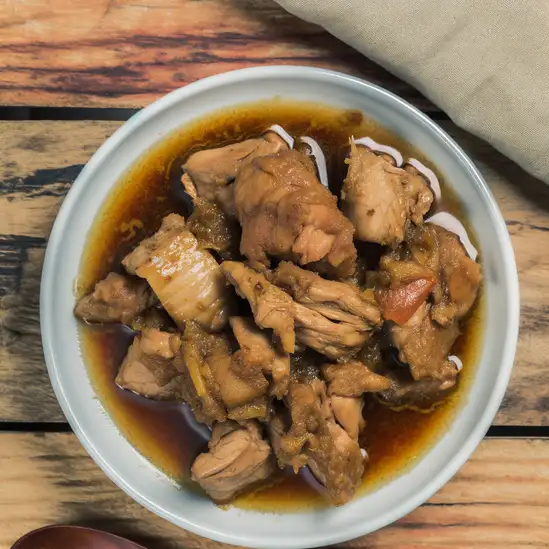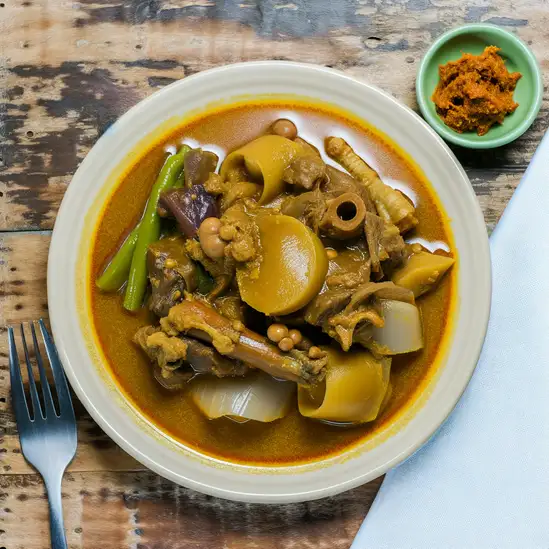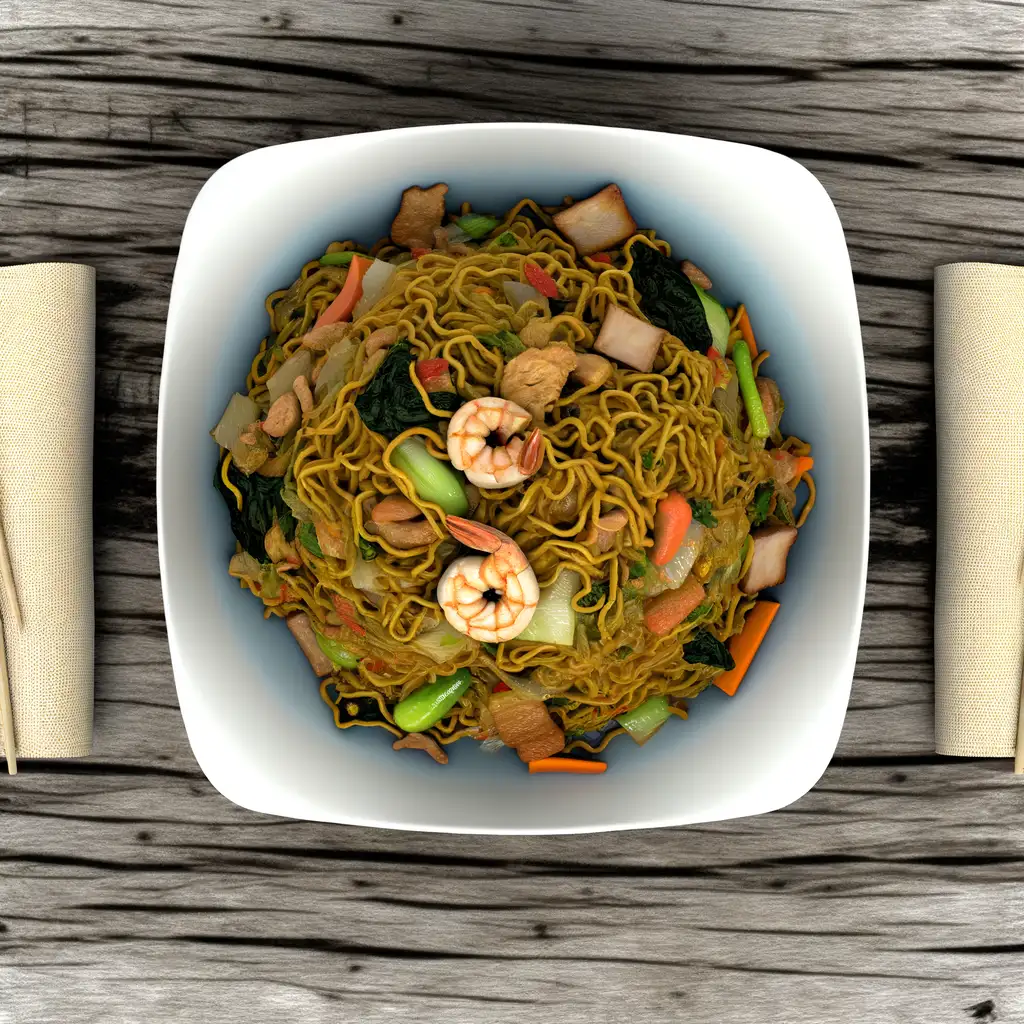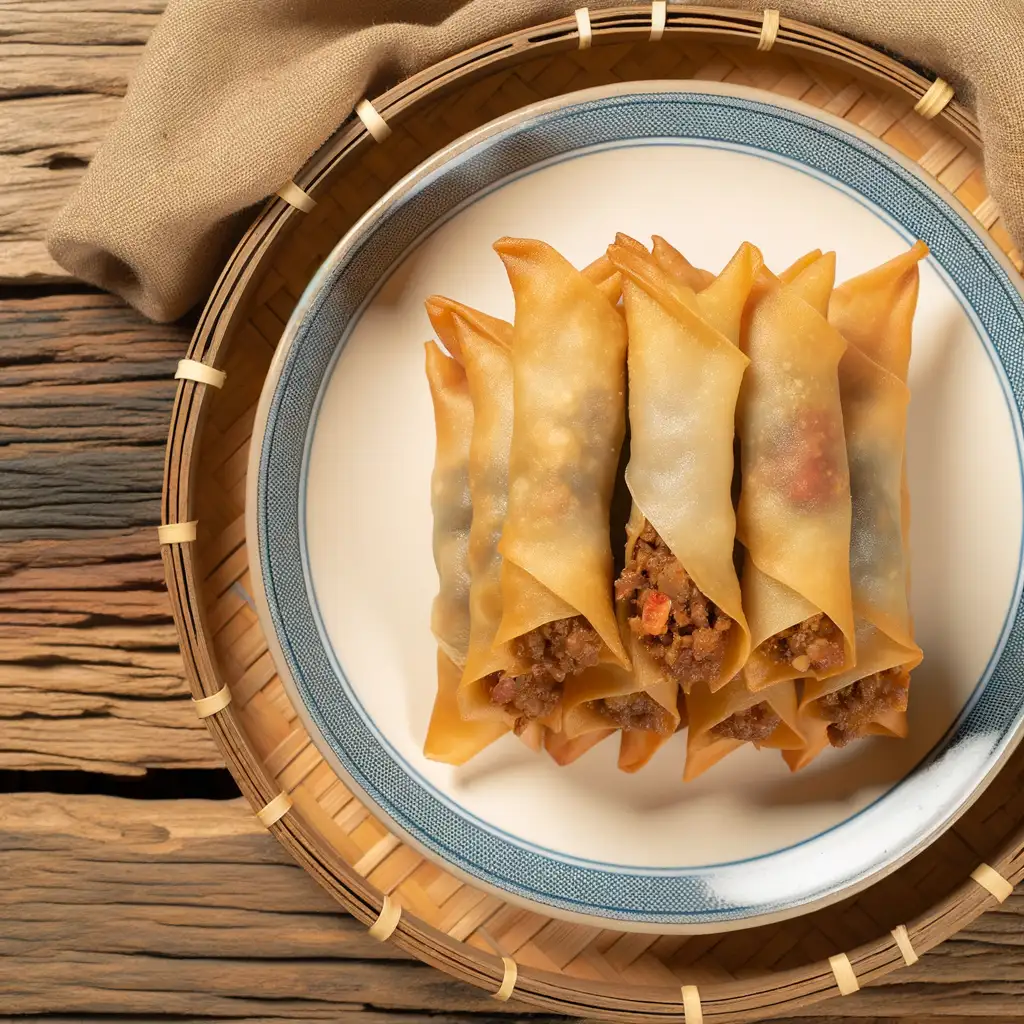



If you find yourself wandering through the Port Area in the Philippines,you’ll immediately notice a pulse that’s both gritty and alive—a place where the hum of cargo ships blends with the chatter of street vendors and the salty breeze from Manila Bay. It’s not polished or pristine,but that’s exactly what gives it character. The air carries a mix of sea salt,diesel,and the unmistakable aroma of sizzling street food,inviting you to slow down and soak it all in. Walking along the waterfront,you’ll catch fishermen hauling in their daily catch,their weathered faces telling stories of years spent at sea. The docks are a hive of activity,with workers moving rhythmically,crates clattering,and seagulls squawking overhead. Nearby,small eateries serve up fresh seafood dishes that burst with flavor—imagine biting into a perfectly grilled squid,smoky and tender,while the sun dips low,painting the sky in shades of orange and pink. What makes Port Area truly special is its raw,unfiltered glimpse into the working heart of Manila. It’s a place where cultures intersect—local fishermen,traders,and travelers all weaving together a tapestry of resilience and warmth. The people here are straightforward but welcoming,and their stories linger in the air,making you feel like you’re part of something real and enduring. If you want to experience Manila beyond the usual tourist spots,Port Area offers a vibrant,honest slice of life that stays with you long after you leave.
The information on this page is currently being reviewed by Tripkliq and should be used as a guide only
Eng word: Hello
Eng pronunciation: Kah-moo-stah
Local language: Kamusta
Eng word: Goodbye
Eng pronunciation: Pah-ah-lahm
Local language: Paalam
Eng word: Thank you
Eng pronunciation: Sah-lah-maht
Local language: Salamat
Eng word: How much
Eng pronunciation: Mahg-kah-noh
Local language: Magkano
Eng word: Toilet
Eng pronunciation: Bahn-yo
Local language: Banyo
Eng word: Help me
Eng pronunciation: Too-loo-ngahn moh ah-koh
Local language: Tulungan mo ako
Eng word: Yes
Eng pronunciation: Oh-oh
Local language: Oo
Eng word: No
Eng pronunciation: Hin-deh
Local language: Hindi
Eng word: Excuse me
Eng pronunciation: Pah-oo-mahn-hin
Local language: Paumanhin
The Port Area in Manila has been a vital hub for maritime trade since the Spanish colonial period, serving as the gateway for goods and cultural exchanges between the Philippines and the rest of the world.
The Manila South Harbor, located in the Port Area, is one of the busiest and most important ports in the Philippines, playing a key role in the country's economy and international trade.
The iconic Bureau of Customs Building, located in the Port Area, is a neoclassical structure built in the 1920s. It stands as a testament to the city's rich architectural history and its role in trade and commerce.
The Port Area's location along the historic Manila Bay has made it a strategic point for trade, defense, and cultural exchanges throughout the centuries.
During the Spanish colonial era, the Port Area was a key site for the Manila-Acapulco Galleon Trade, which connected Asia, the Americas, and Europe, making Manila a global trading hub.
The Port Area is located near Intramuros, the historic walled city of Manila, allowing visitors to explore the rich history of the Spanish colonial period just a short distance away.
The Port Area offers stunning views of the famous Manila Bay sunset, a natural spectacle that has inspired countless artists and photographers over the years.
The Port Area has been a melting pot of cultures due to its role as a trading hub, influencing the diverse traditions, cuisine, and heritage of Manila.
The Port Area has undergone significant modernization over the years, blending its historical significance with state-of-the-art facilities to support the growing demands of international trade.
In Port Area, the most common Power Adaptor is Type A, Type B.



A savory dish made with meat, usually chicken or pork, marinated in vinegar, soy sauce, garlic, and spices, then slow-cooked until tender.

A sour soup typically made with tamarind, tomatoes, and various vegetables, often cooked with pork, shrimp, or fish.

A whole roasted pig, known for its crispy skin and tender meat, often served during special occasions and celebrations.

A rich and hearty stew made with oxtail, tripe, and vegetables, cooked in a thick peanut sauce, often served with bagoong (fermented shrimp paste).

A popular dessert made with crushed ice, sweetened fruits, jellies, and topped with leche flan and ube ice cream, perfect for the tropical heat.

A stir-fried noodle dish that comes in various forms, often mixed with vegetables, meat, and seafood, symbolizing long life.

Filipino spring rolls filled with ground pork, vegetables, and spices, deep-fried until golden and crispy, often served with a sweet and sour dipping sauce.
Imagine stepping into a place where history hums through the streets and the ocean breeze carries the scent of salty adventure—that’s Cebu City for you. The moment you arrive,there’s this lively energy that wraps around you,a mix of old-world charm and modern buzz. You’ll find yourself wandering through colorful markets where the chatter of vendors blends with the aroma of freshly grilled street food—think sweet,smoky lechon sizzling over coals,tempting you at every corner.
Cebu’s character is a beautiful blend of the past and present. Ancient Spanish forts and centuries-old churches stand proudly alongside sleek cafes and vibrant street art. The city pulses with warmth,not just from the tropical sun but from the people who greet you with genuine smiles and stories. At night,the streets light up with music and laughter,and you can almost taste the festive spirit in the air.
What really makes Cebu unforgettable is how it feels alive in every sense. You can hear the waves crashing nearby,see the colorful jeepneys weaving through traffic,smell the tropical fruits at the market,and feel the warmth of the sun on your skin as you explore. It’s a place where culture,history,and everyday life blend seamlessly,inviting you to dive in and experience its vibrant soul firsthand.
If you ever find yourself craving a place where nature’s calm meets a laid-back island spirit,Puerto Princesa is where you want to be. The moment you step off the plane,there’s this warm,salty breeze that wraps around you,carrying the faint scent of the sea and tropical blooms. It’s a city that doesn’t rush — people move with a gentle rhythm,and the streets hum softly with the chatter of locals and the occasional strum of a guitar from a nearby café. It feels like a breath of fresh air,both literally and figuratively.
What really makes Puerto Princesa stand out is its deep connection to nature. The famous Underground River is just the beginning — lush mangroves,crystal-clear waters,and vibrant coral reefs surround the city,inviting you to explore. You can hear the calls of exotic birds in the morning and watch fishermen bring in their catch as the sun dips low,painting the sky in shades of pink and orange. The food scene here is a delightful surprise too — fresh seafood grilled right on the beach,sweet tropical fruits bursting with flavor,and local dishes that tell stories of the sea and the land.
But beyond the sights and tastes,it’s the people who make Puerto Princesa unforgettable. Their warmth and genuine smiles make you feel like you’re not just visiting,but truly welcomed. Whether you’re wandering through the bustling market or sharing a laugh with a vendor,there’s a sense of community that lingers long after you leave. It’s a place that invites you to slow down,soak in the simple joys,and leave with a heart full of stories.
If you ever find yourself wandering through the heart of Bohol,Tagbilaran City greets you with a warm,unhurried rhythm that feels like a gentle hug after a long journey. The city hums with life—not the overwhelming buzz of a metropolis,but a lively,welcoming energy where jeepneys rattle by and street vendors call out their fresh fruit and local snacks. As you stroll along the waterfront,the salty breeze carries the faint scent of grilled seafood mingling with tropical flowers,inviting you to slow down and savor the moment.
Tagbilaran’s charm lies in its blend of old and new. You’ll catch glimpses of Spanish-era churches standing proudly beside colorful markets where locals barter over ripe mangoes and sticky rice treats. The city’s pulse is deeply tied to its people—friendly,easygoing,and proud of their heritage. At night,the streets light up with laughter and music spilling from small eateries where you can taste the rich flavors of Boholano cuisine,like the sweet,tender kalamay or freshly caught fish cooked with coconut milk.
What really stays with you is the city’s sense of community and its connection to the sea. Whether you’re watching fishermen haul in their catch at dawn or joining a lively fiesta,Tagbilaran feels like a place where stories are shared over steaming cups of coffee and where every corner invites you to discover a new layer of its soul. It’s not just a stopover—it’s a place that quietly pulls you in and makes you want to stay a little longer.
If you ever find yourself craving a place where vibrant city life meets the gentle embrace of nature,Davao City is where you want to be. The moment you step off the plane,there’s this warm,welcoming energy that wraps around you—like the city itself is inviting you to slow down and savor every moment. The air carries a subtle mix of tropical blooms and the faint,salty hint of the nearby sea,while the streets buzz with a friendly hum of jeepneys and chatter in a melody of languages.
Walking through Davao,you’ll notice how the city wears its culture proudly. From the colorful street markets where vendors call out their fresh fruits and local delicacies,to the intricate weaves and crafts that tell stories of indigenous tribes,there’s a deep respect for heritage here. And the food? Oh,the food! Imagine biting into a juicy durian (if you’re brave enough),or savoring grilled tuna so fresh it practically melts in your mouth,all while sipping on a sweet,refreshing calamansi juice.
What really sets Davao apart is its balance—towering mountains and lush parks sit just a short drive from bustling urban spots. You can spend your morning hiking up Mount Apo,the Philippines’ highest peak,then wind down with a stroll along the riverwalk as the sun dips low,painting the sky in shades of orange and pink. It’s a city that feels alive but never rushed,where every corner invites you to explore,taste,and connect.
If you ever find yourself craving a place where history hums softly alongside the buzz of everyday life,Iloilo City is where you want to be. The moment you step into its streets,there’s this warm,inviting energy—like the city is gently nudging you to slow down and savor its stories. You’ll notice the colonial-era buildings standing proudly beside modern cafes,their facades telling tales of centuries past. The air carries a subtle mix of salty sea breeze and the sweet aroma of freshly baked pan de sal,making every morning feel like a comforting embrace.
Walking through Iloilo,you’ll hear the lively chatter of locals,the clinking of glasses in cozy eateries,and the distant strum of guitars from street performers. The city’s character shines brightest in its festivals,especially the Dinagyang,where vibrant costumes and rhythmic drums fill the streets with infectious joy. But even on quieter days,the genuine smiles of Ilonggos and their easygoing hospitality make you feel like you’ve found a second home.
And then there’s the food—oh,the food! From the rich,savory batchoy served steaming hot in humble noodle shops to the sweet,creamy taste of fresh mangoes,every bite is a celebration of local flavors. Iloilo isn’t just a place to visit; it’s a place to experience,where every corner invites you to pause,breathe,and fall a little in love with its soul.
Famous for the majestic Mayon Volcano,Legazpi City is also a starting point for exploring the nearby islands of Albay Gulf and the whale shark interactions in Donsol.
ExploreScammers install skimming devices on ATMs to steal card information from tourists withdrawing cash.
Money changers offer attractive exchange rates but use sleight of hand to shortchange tourists or provide counterfeit bills.
Scammers pose as representatives of charities or organizations, asking tourists for donations that never reach the intended cause.
Vendors sell counterfeit or low-quality souvenirs at high prices, claiming they are authentic or handmade by local artisans.
Scammers pose as tour guides and offer to show tourists around, charging exorbitant fees or leading them to overpriced shops and restaurants where they get a commission.
Restaurants or food stalls near tourist spots charge tourists significantly higher prices than locals, sometimes adding hidden fees to the bill.
Taxi drivers or tricycle operators refuse to use meters and charge tourists inflated fares, especially for short distances or trips to popular destinations.
Thieves target tourists in crowded areas, stealing wallets, phones, or bags, often working in groups to distract the victim.
Children or adults approach tourists asking for money, often using emotional stories or pretending to be in dire need, but the money goes to organized groups or syndicates.
The Philippines has strict anti-drug laws under the Comprehensive Dangerous Drugs Act of 2002 (RA 9165). Possession, use, or trafficking of illegal drugs is severely punished, with penalties ranging from long prison sentences to the death penalty in extreme cases. Tourists should avoid any involvement with illegal drugs, as enforcement is strict and penalties are harsh.
In the Port Area, Manila, Philippines, smoking is regulated under the nationwide Tobacco Regulation Act (RA 9211) and local ordinances. Smoking is prohibited in public places such as schools, hospitals, public transport, and enclosed areas. Designated smoking areas may be available, but tourists should look for proper signage. Violators may face fines or penalties.
Vaping is regulated similarly to smoking under Executive Order No. 26 and other local laws. The use of e-cigarettes is prohibited in public places, including parks, government buildings, and public transport. Designated vaping areas may exist, but tourists should confirm local rules to avoid penalties.
What are other people saying about Port Area?
Recent Social posts about Port Area
There is nothing to show you for now.